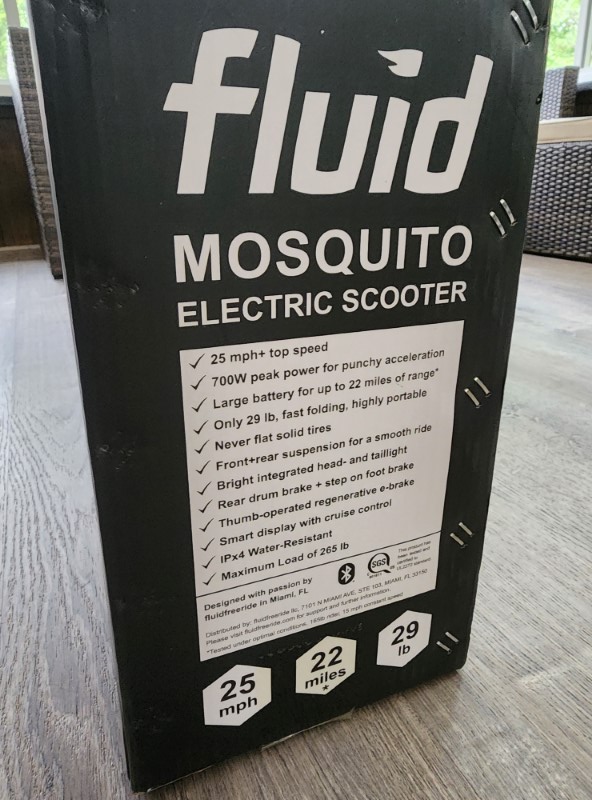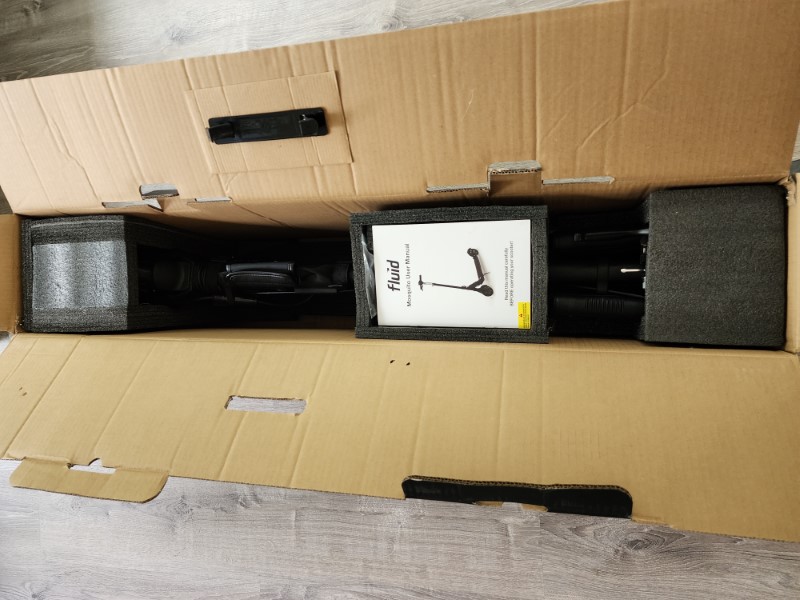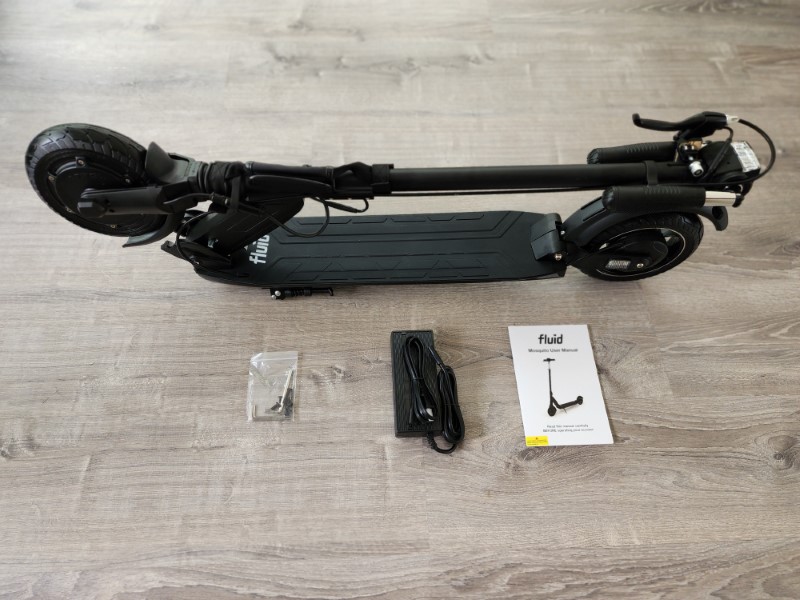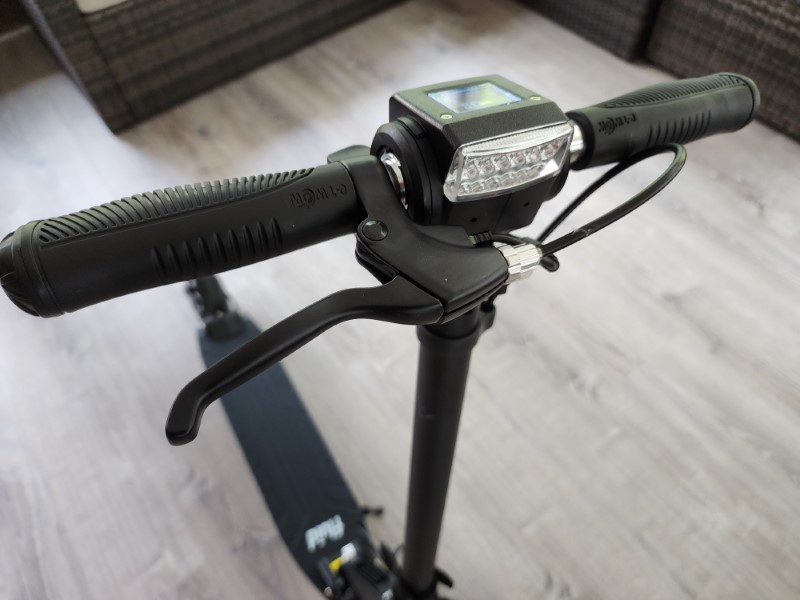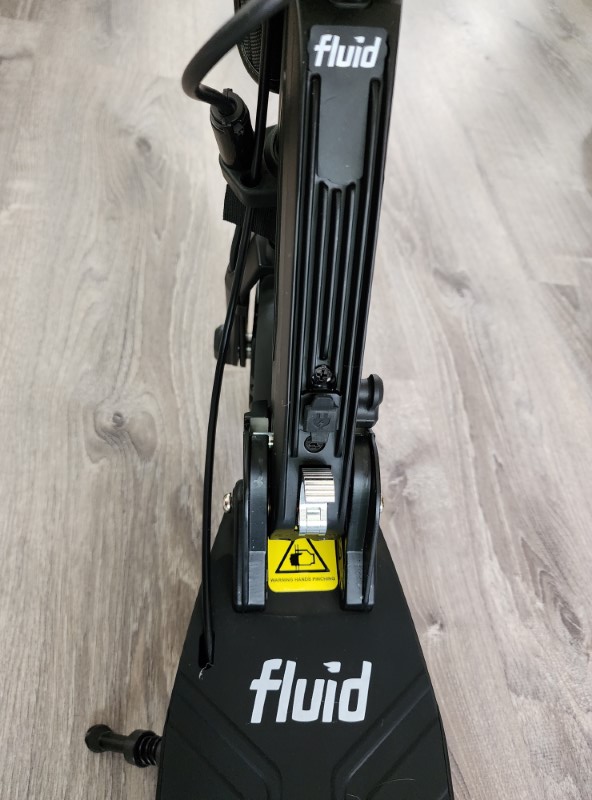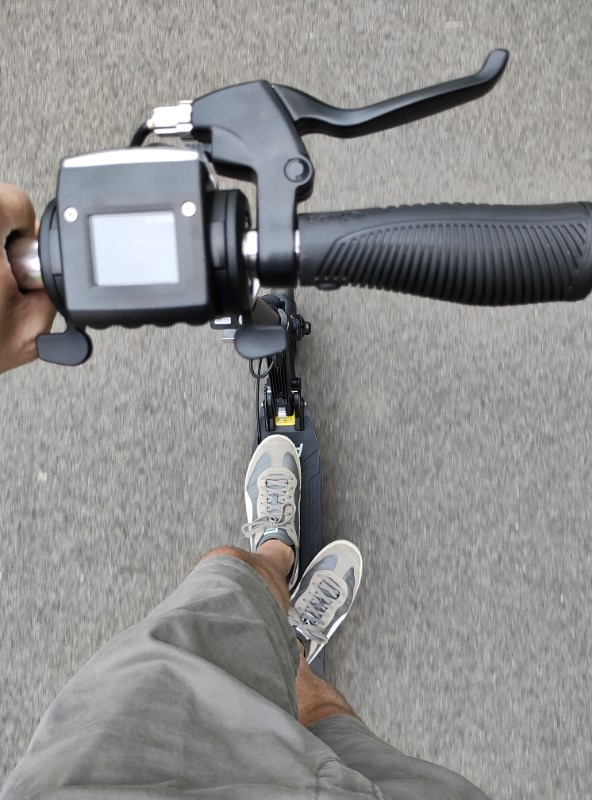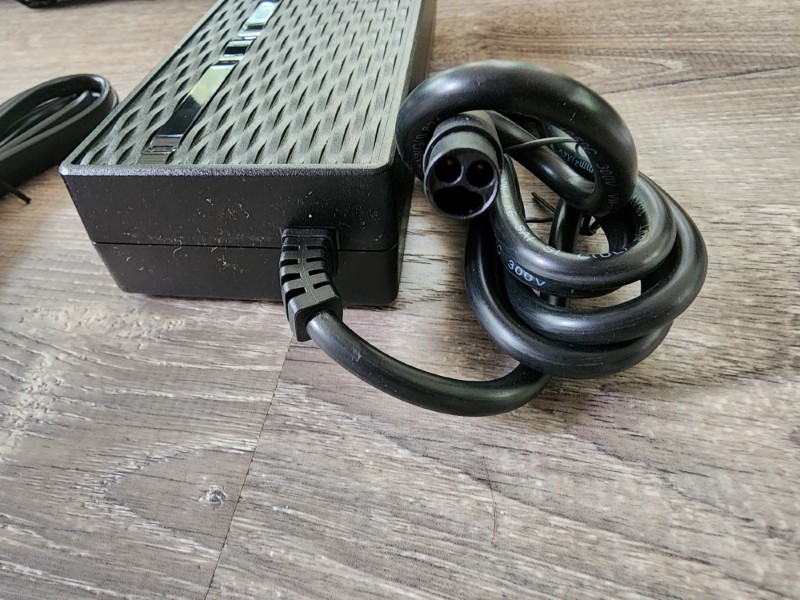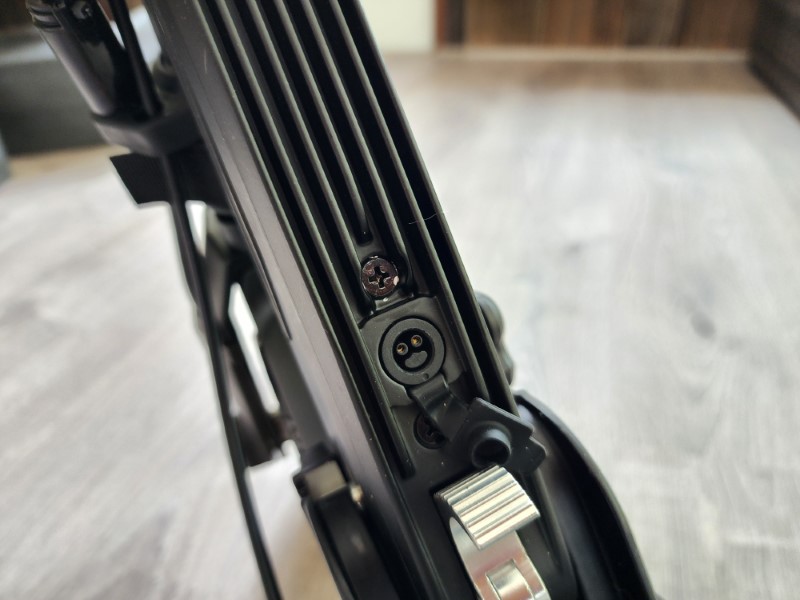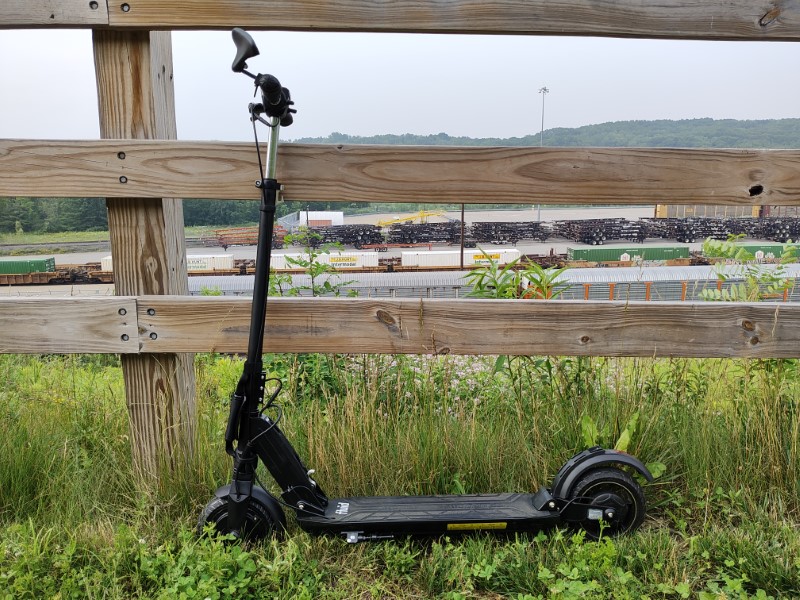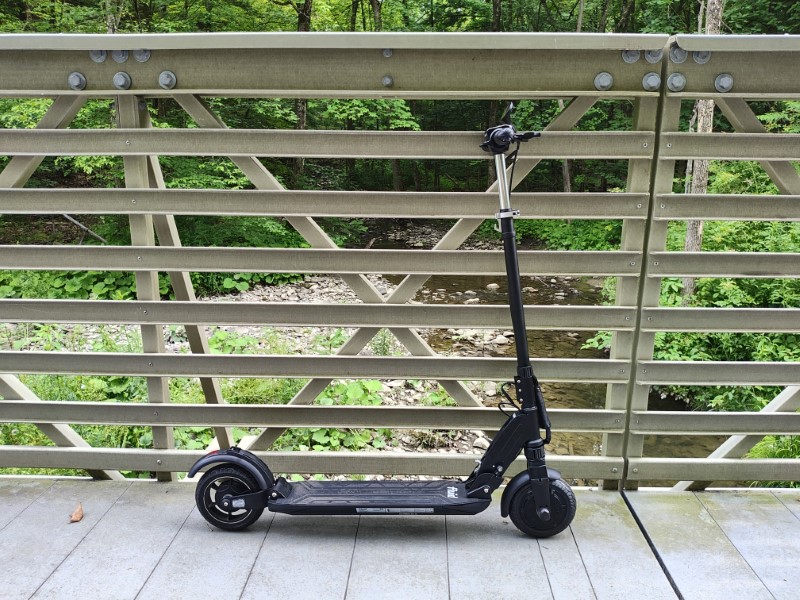
REVIEW – Electric means of conveyance are growing in popularity, with the electric scooter market expected to grow from $37 to $79 billion between 2023 and 2030. With some many companies jumping into this booming market, finding the right scooter in a sea of options can feel daunting. Fluid has brought to market the Mosquito as an all-arounder option that packs a punch in performance while being lightweight for easy portability. There’s a lot to like about the Mosquito on paper, and we’ll see if it can really deliver.
What is it?
The Mosquito by Fluid is, as the name implies, a lightweight class two electric scooter. This model is a collab between Fluid and E-TWOW, both of which are well-regarded in the growing urban mobility space. The design of the Mosquito has found a good weight-to-performance ratio, by getting under 30lbs while also delivering high enough range and speed to make it an able commuter option. Fluid has been around since 2018, and in addition to their flagship stores in Miami, NYC and San Francisco, they maintain a network of service centers. Alongside the Mosquito, Fluid has a wide range of e-scooters available to suit the needs of casual to enthusiast riders, both on and off road.
What’s in the box?
- Fluid Mosquito, fully assembled
- Charger
- Tools
- Manual
In some photos throughout the review, you may notice a mirror attached to the handlebar, this is not included with the Mosquito.
Hardware specs
| Top Speed | 25+ mph (up to 28mph in gear 5) |
| Motor |
Brushless, 500W base – 700W peak
|
| Range | 22 miles |
| Battery | 48v 9.6ah (461 Wh) |
| Weight | 29 lbs |
| Dimensions (folded) | 13.0 x 6.0 x 41.7 inches |
| Dimensions (open) | 42.3x 15.0 x 44.6 inches |
| Waterproof Rating | IPX4 |
| Tires | 8″ x 2″ solid |
| Drive | FWD |
| Suspension | Dual, spring |
| Charging Time | 5-6h 2A |
| Weight Limit | 265lbs |
| Physical Brakes | Rear drum and rear step |
| Electric Braking | Regenerative throttle braking |
| Lights | Front/Rear |
| Throttle | Thumb |
| Display | Yes, color HUD |
Design and features
The Fluid Mosquito electric scooter has a very clean aesthetic with minimal branding, and feels very solid in spite of its weight. On the board where you stand is a silicone cover for grip, though I did find the board itself to be slightly narrow as it wouldn’t allow both feet to be parallel without hanging off the board slightly. This requires a more ‘aggressive’ stance with one foot forward, and your weight on the back foot. Otherwise, ergonomics are generally comfortable – the handlebar grips are wide to support the palm, and the height adjustable stem helped my 6′ frame find a relaxed height. Helpfully, the cruise control feature takes the pressure off the thumbs for longer rides at consistent speeds.
A display is included, but it is not friendly at all to direct sunlight or polarized sunglasses. The two most important bits of data the display offers are speed and battery status, so you won’t have to look at it often if you’re in a capped speed mode. Further, the button positions (power, settings, light, horn) are difficult to see when riding. You’ll figure out what’s what over time, but at a glance it can be awkward at first.
Thanks to the lightweight design, the portability of the Mosquito is excellent. As a front wheel drive motor, much of the weight is near that front wheel – which is where you’ll find the included carry handle on the stem. This makes it well balanced in the hand for easy transport up stairs, or wherever you need to take it when not riding. Folding the scooter is a simple process – unlock the safety latch, tap the folding lever with your foot, and fold the stem until it locks into the rear fender. The handlebars can also fold in along the stem to keep the profile as narrow as possible.
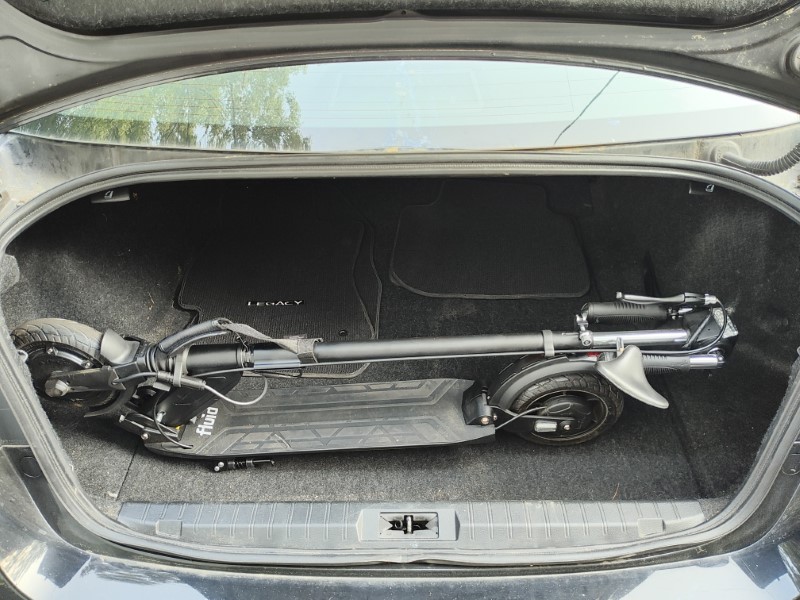
From a safety perspective, Fluid has some thoughtful touches applied to the Mosquito. There are three brakes in total: electric, drum, and rear step. The electric brake is applied by the left thumb lever, and applies braking force at the front wheel. At lower speeds, this brake feels a bit dramatic, so some caution is advised when getting used to the braking system on early rides. The drum brake is a more traditional mechanical brake and is actuated by the brake lever on the right side of the handlebar. Lastly, you can apply a brake by applying force to the rear mudguard.
In most cases I found the Fluid Mosquito electric scooter’s electric brake system to be up to task for stopping quickly at low speeds, with the drum being well suited to slowing down ahead of a stop sign. You can apply both at once which also helps when you’re going over 20mph. I didn’t find a need for the rear step brake much as I favored the hand controlled brakes, but it is effective and a ‘nice to have’ should something happen with one of the other two brakes. Applying either electric or drum brake will trigger the rear tail light to illuminate or brighten, just like in a car.
A front light, and horn are also included. The front light is more of a ‘be seen’ as opposed to something to rely on in low lighting conditions. A handlebar mounted light may be a better option if you need a lighting system to light the way. As for the horn, it sounds like a residential fire alarm. The loud, electric sound carries well and will definitely get attention.
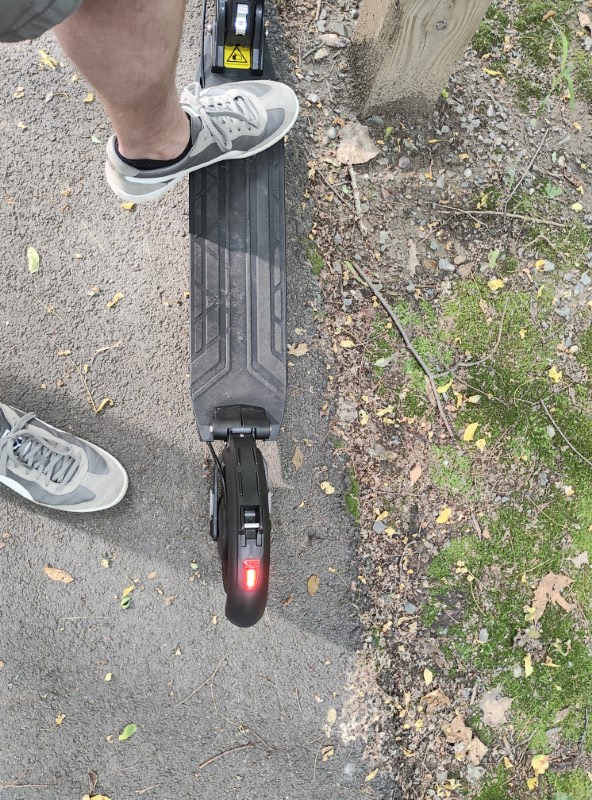
Setup
Setting up the Fluid Mosquito electric scooter is a breeze, as it arrives fully assembled. Take some time with the included hex keys to make sure bolts are tightened throughout. I did find the handlebar brake to be slightly loose out of the box, but everything else was good. Plug in the charger to top it off, and you’re ready to go! I’ll call out here that I found the charging times to be generally far better than the quoted spec, as I was consistently getting zero to 100% charges in just shy of three hours as opposed to the five-six hours quoted.
If you choose to make changes to the speed or other settings, it’s a simple process of powering off the scooter and powering on with the electric brake toggle depressed. Reference to the manual is important to make sure you’re in the proper settings, as the display won’t tell you what you’re changing beyond the setting code (e.g. P0, P1, L5, L3).
The speed settings you can dial in are: L1 = 5mph, L2 = 10mph, L3 = 16mph, L4 = 24 mph, L5 = no limit.
Performance
Please be sure to have proper safety equipment rated for the speeds you intend to ride, and check your local laws to ensure that where you will be riding is legal to do so.
Fluid designed a very capable performer, and I had a lot of fun riding the Mosquito over the past month. The scooter is very responsive, and has a bit of kick to it which will get you up to speed in no time.
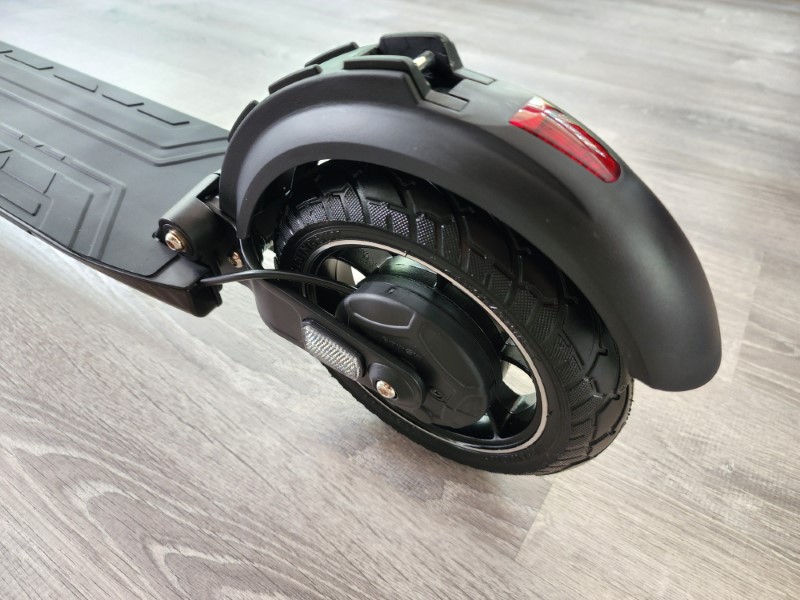
The ride offered by the Fluid Mosquito electric scooter is generally smooth, with the built-in suspension helping keep things comfortable over gradual changes in surface – such as the transition from the street to a sidewalk. The suspension is less helpful at absorbing sharp surface changes, like going over a manhole cover. Ride quality is further impacted by the solid tires. On smooth surfaces, they’re great, but if the pavement you’re riding on is in rough shape, you’re going to feel those vibrations transfer up the stem. The trade-off here is that there aren’t any tubes or tire maintenance to worry about. It’s also worth noting here that the tires are not really intended for anything aside from dry pavement. While they have a decent tread, I could not get any traction when trying to take off from a grassy area.
Diving into the range, let me just give kudos to Fluid for making it easy to understand how they calculated their claimed range. From their website:
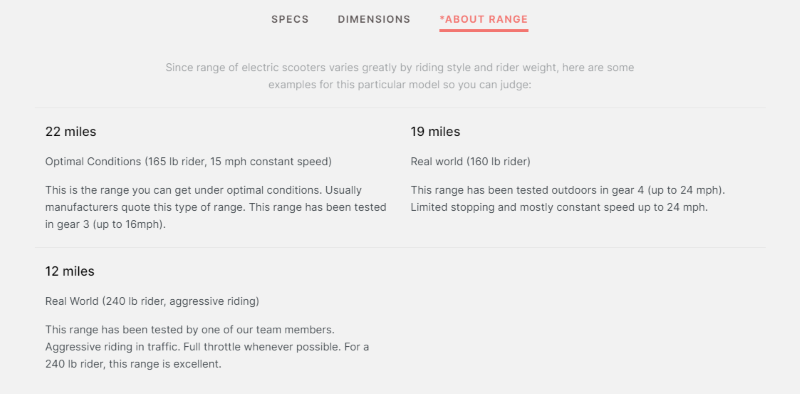
In testing, I found this to be pretty close to accurate. I generally ride in speed setting L3 which caps me at 16mph. As a 185 lb rider, I can get approximately 15 miles of ride at an average of 14 mph, inclusive of hill climbs up to 6% grade. This trends inline with the claims by Fluid, as we can infer that “optimal conditions” doesn’t include hills. Here is a snapshot of one of my test rides, which took the battery from 100 to 46%.
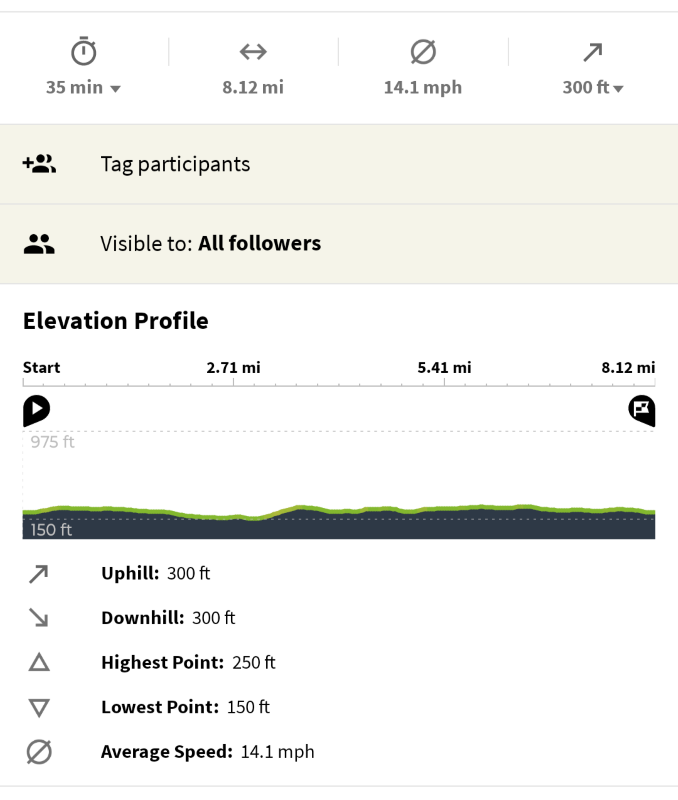
While riding, I was pleasantly surprised to find that the speed cap is adaptable to hills – both on the ascent and descent. When in a capped speed mode, you’ll feel the Mosquito applying some braking to keep you under the speed cap you’ve set. This was nice to know that I didn’t have to manage the braking when going downhill to prevent the scooter from going faster than I wanted it to.
So, how fast can it go? 25+ mph could mean anything, though for me it didn’t go much faster than that. On a flat straight away I capped off at around 27.6 mph, which… was plenty fast enough for me. The battery will obviously drain quickly when pushing the scooter to its limit, but having the ability to open it up if and when desired is always nice to have. I was also impressed with how stable the scooter continued to feel when maxed out. I wouldn’t want to take any turns at that speed with the solid tires, but on a straight shot – it felt pretty good.
What I like
- Lightweight, portable design
- Range and performance are excellent for the size and weight
- Ride assist features like cruise control lend to a comfortable ride
What I’d change
- Wider platform for comfort on longer rides
- Tires don’t convey a great sense of confidence in anything aside from optimal conditions (dry, smooth pavement)
- Display quality in sunlight, and utility in general
Final thoughts
There is a lot to like about the Fluid Mosquito electric scooter, and if you’re new to electric scooters like I am, it is absolutely worth a look. It punches well above its weight, and actually delivers on its performance claims. Whether looking for an urban commuter, or just a new way to explore around town, the Mosquito delivers a fun ride in a svelte package.
It shouldn’t be overlooked that Fluid is based in the US, and has a network of repair shops should you ever need service on your scooter. If you’re near one of their showrooms, you can even stop in to check out their selection of scooters in person.
Price: $1,099
Where to buy: Fluid and Amazon
Source: The sample of this product was provided by Fluid

